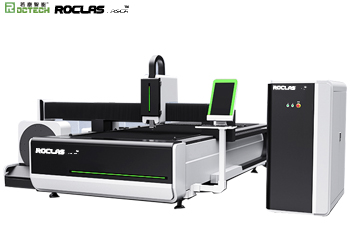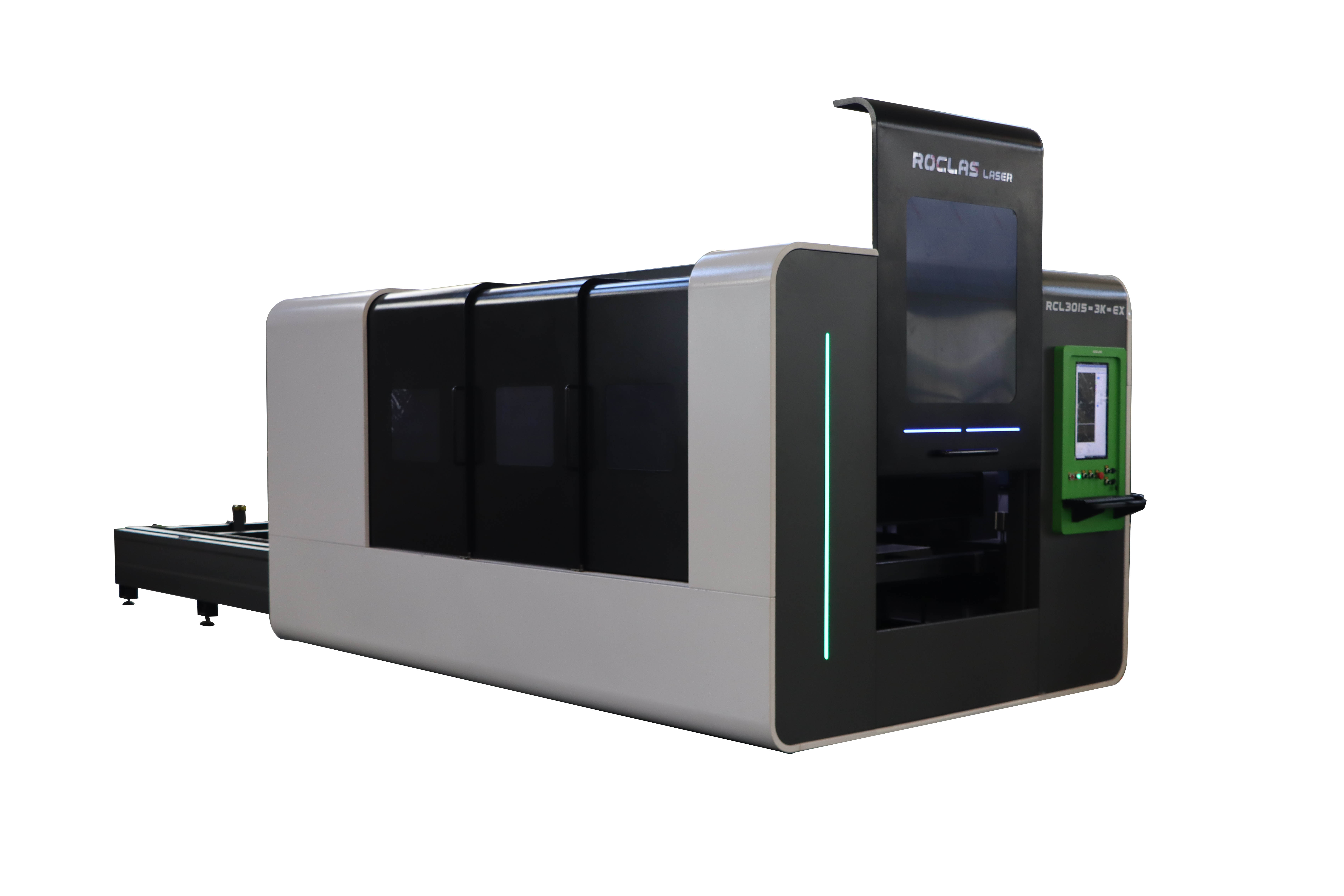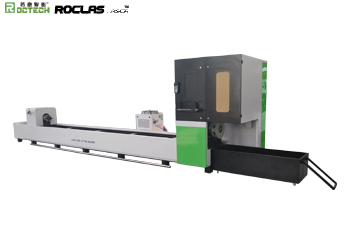소개
레이저 절단기 제조는 제조 및 설계 산업을 완전히 변화시키고 비길 데 없는 정밀도, 다기능성 및 효율성을 제공합니다.이 기술은 고출력 레이저 절단, 조각 및 식각 재료를 사용하여 산업 제조에서 맞춤형 아트 및 디자인에 이르기까지 모든 분야의 초석이 되었습니다.이 포괄적인 가이드는 레이저 절단기 제조의 복잡성을 깊이 연구하고 기술, 응용 및 미래 추세를 탐구합니다.

레이저 절단기 제조 이해
1.레이저 절단기 제조란?

레이저 절단기 제조는 레이저 기술을 사용하여 고정밀도로 재료를 절단하거나 조각하는 것과 관련됩니다.이 프로세스는 정밀도와 반복성을 보장하는 컴퓨터 수치 제어 (CNC) 로 제어됩니다.레이저 빔은 재료에 초점을 맞추어 재료를 녹이거나 연소하거나 증발하여 필요한 모양이나 도안을 형성한다.

2. Types of Laser Cutters
There are several types of laser cutters, each suited for different materials and applications
- CO2 Lasers Ideal for cutting, engraving, and etching non-metallic materials such as wood, acrylic, glass, and textiles.
- Fiber Lasers Best suited for cutting metals, including stainless steel, aluminum, and brass.
- NdYAG and NdYVO Lasers Used for high-precision applications, particularly in the medical and electronics industries.
Techniques in Laser Cutter Fabrication
1. Vector Cutting
Vector cutting involves cutting along the lines of a vector graphic. This technique is used to create precise shapes and designs from materials like wood, acrylic, and metal. The laser follows the path defined by the vector, resulting in clean, sharp edges.
2. Raster Engraving
Raster engraving is a technique where the laser etches a surface by moving back and forth across the material, similar to how an inkjet printer works. This method is used for adding detailed images, text, or patterns to a material's surface.
3. 3D Engraving
3D engraving allows for the creation of three-dimensional designs by varying the depth of the laser's cut. This technique is often used in artistic applications, such as creating sculptures or intricate decorative pieces.
4. Laser Marking
Laser marking involves altering the surface of a material to create a mark without cutting through it. This technique is commonly used for labeling, branding, and adding serial numbers to products.
Applications of Laser Cutter Fabrication
1. Industrial Manufacturing
Laser cutter fabrication is widely used in industrial manufacturing for cutting and shaping metal components, creating intricate parts for machinery, and producing custom tools and fixtures. The precision and speed of laser cutting make it an essential tool in mass production.
2. Custom Art and Design
Artists and designers use laser cutters to create custom pieces, from intricate jewelry to large-scale installations. The ability to work with a variety of materials and the precision of laser cutting allow for endless creative possibilities.
3. Architecture and Model Making
Architects and model makers use laser cutters to create detailed scale models of buildings and structures. The precision of laser cutting ensures that even the smallest details are accurately represented.
4. Textile and Fashion Industry
In the textile and fashion industry, laser cutters are used to create intricate patterns, cut fabrics, and engrave designs onto leather and other materials. This technology allows for the production of unique, high-quality garments and accessories.
5. Electronics and Medical Devices
Laser cutter fabrication is essential in the production of electronic components and medical devices. The precision of laser cutting ensures that small, intricate parts are produced with high accuracy, which is critical in these industries.
Advantages of Laser Cutter Fabrication
1. Precision and Accuracy
Laser cutters offer unmatched precision, allowing for the creation of intricate designs and complex shapes with minimal error. This is particularly important in industries where accuracy is critical, such as electronics and medical device manufacturing.
2. Versatility
Laser cutters can work with a wide range of materials, including metals, plastics, wood, glass, and textiles. This versatility makes them suitable for a variety of applications, from industrial manufacturing to custom art and design.
3. Speed and Efficiency
Laser cutting is a fast and efficient process, making it ideal for mass production. The ability to cut and engrave materials quickly without compromising on quality is a significant advantage in industrial settings.
4. Minimal Waste
Laser cutting produces minimal waste, as the laser beam is precise and only removes the necessary material. This is beneficial for both cost savings and environmental sustainability.
5. Customization
Laser cutter fabrication allows for high levels of customization, making it possible to create unique, one-of-a-kind pieces. This is particularly valuable in industries such as fashion, art, and design.
Challenges and Considerations
1. Material Limitations
While laser cutters can work with a wide range of materials, there are some limitations. For example, certain materials, such as PVC, can release toxic fumes when cut with a laser. It's essential to choose the right type of laser cutter for the material being used.
2. Initial Cost
The initial cost of purchasing a laser cutter can be high, particularly for industrial-grade machines. However, the long-term benefits in terms of precision, efficiency, and versatility often outweigh the initial investment.
3. Maintenance and Safety
Laser cutters require regular maintenance to ensure optimal performance. Additionally, safety precautions must be taken when operating a laser cutter, as the high-powered laser beam can be hazardous if not used correctly.
Future Trends in Laser Cutter Fabrication
1. Integration with AI and Automation
The integration of artificial intelligence (AI) and automation into laser cutter fabrication is expected to enhance efficiency and precision further. AI can optimize cutting paths, reduce material waste, and improve overall production speed.
2. Advancements in Laser Technology
Ongoing advancements in laser technology are likely to result in more powerful and versatile laser cutters. This could include the development of new laser types, improved beam quality, and enhanced cutting speeds.
3. Increased Use in Additive Manufacturing
Laser cutter fabrication is increasingly being used in additive manufacturing (3D printing) to create complex, multi-material structures. This trend is expected to continue, with laser cutting playing a crucial role in the future of 3D printing.
4. Sustainability and Eco-Friendly Practices
As environmental concerns grow, there is a push towards more sustainable and eco-friendly practices in laser cutter fabrication. This includes the use of recyclable materials, energy-efficient machines, and processes that minimize waste.
5. Expansion into New Industries
Laser cutter fabrication is likely to expand into new industries, such as aerospace, automotive, and renewable energy. The precision and versatility of laser cutting make it an attractive option for these industries, where high-quality, custom components are essential.
Conclusion
Laser cutter fabrication has transformed the way we create and manufacture, offering precision, versatility, and efficiency across a wide range of industries. From industrial manufacturing to custom art and design, the applications of laser cutting are vast and continually expanding. As technology advances, we can expect to see even more innovative uses and improvements in laser cutter fabrication, further solidifying its role as a cornerstone of modern manufacturing and design. Whether you're an industry professional or a hobbyist, understanding the techniques, applications, and future trends of laser cutter fabrication is essential for staying ahead in this rapidly evolving field.
다음 페이지:아니요
일반적인 조언이나 특정 지원이 필요하든 상관없이, 우리는 당신을 도와드릴 것입니다.